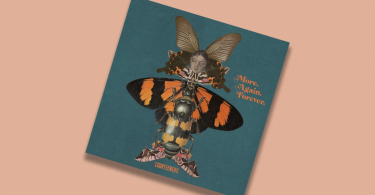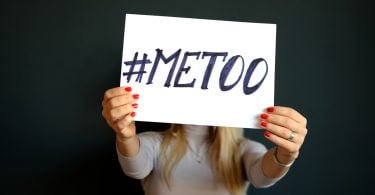The clip starts in black and white with a woman talking on a mobile flip phone. She then arrives at a house – a house that is vacant, dreary and bereft of life. As she removes her sunglasses, she begins removing dusty covers off of furniture and other objects. Then, she takes a deep breath, looks up, opens her eyes and sings.
“Hello, it’s me. I was wondering if after all these years you’d like to meet to go over everything. They say that time’s supposed to heal ya, but I ain’t done much healing.”
An answer through social media
In the span of almost two minutes, Adele was back, returning without fanfare and bringing many surprises along the way. In the nearly two weeks since the video was released, ‘Hello’ would become the UK’s official number one song, and, since its release, has continued to be in the top ten.
Speculation was rampant about when Adele would return to the music scene, and how she could capitalise on her last album, 21. She did not answer through conventional means – she did not give interviews, no stations played any new exclusive tracks out of the blue.
Instead, she answered through YouTube, Twitter and other social media platforms, to the excitement of many. Cover songs were on YouTube instantly, while a video of Sir David Attenborough narrating a beginning to the video during Greg James’ show on Radio 1 went viral.
More than just listening
While it showcased the excitement people had for Adele’s new record, it also put a lens on the broad influence social media has had on the modern culture of music. While radio stations still play a significant role, many eyes and ears have been drawn to YouTube, Facebook and Twitter, whether to watch ‘Hello’ for the hundredth time, or to explore new artists like Jack Garratt.
On those platforms, music fans share and react to songs, curate playlists, and wonder what the next hit song will be. Adele had become part of the culture of music by social.
Yet, in the year 2015, it was more than just Adele that got social media users excited. The pop group One Direction was also one of those acts, and at the forefront were their loyal fans, the Directioners, constantly tweeting expressions of pure shock and awe, combined with plenty of emojis, whether they were asking Radio 3 or Radio 4 to play the new single, or if Harry Styles did anything at all.
@BBCRadio3 Hello, I would like to request music No Control of One Direction, thanks #NoControlDay
— taylicia ☁ (@cooIforthoran) May 17, 2015
@BBCRadio4 please play #NoControl by one direction its a humble request
— harry’s cupcake (@1D_my_heros) May 17, 2015
@BBCRadio4 Play No Control by One Direction ? – request
— pearl (@toIadidas) May 17, 2015
Twitter timelines for @BBCRadio3 and @BBCRadio4 still hilariously SWAMPED with requests for the new @onedirection song.
— Steve Bowbrick (@bowbrick) May 17, 2015
The same rule applied to pop singer Justin Bieber and his beliebers, causing an endless list of tweets, gifs and memes, updated 24 hours a day, 7 days a week, much to the chagrin of other Twitter users. However there was some influence in Bieber’s tweeting, as he asked not to have the number 1 single in the UK on the Christmas chart – instead, the NHS choir should.
so for 1 week it’s ok not to be #1. Let’s do the right thing & help them win. It’s Christmas. @Choir_NHS good luck https://t.co/ORCtFY1k4i
— Justin Bieber (@justinbieber) December 23, 2015
Huge honour to announce @Choir_NHS as No.1. I was a poorly baby and saved by Lewisham Hospital and brought home on Xmas Day 1985 #LoveTheNHS
— Greg James (@gregjames) December 25, 2015
So no matter how much one wants to avoid it, it would still be there the next day. Social media has evolved how we consume music, and how we appreciate it. Music by social is not a fad, it is here to stay, and for the evolving music industry, many suspect that it’s not at all bad.
What do you think? How has social media and the web influenced music today? Have your say in the comments section below.








